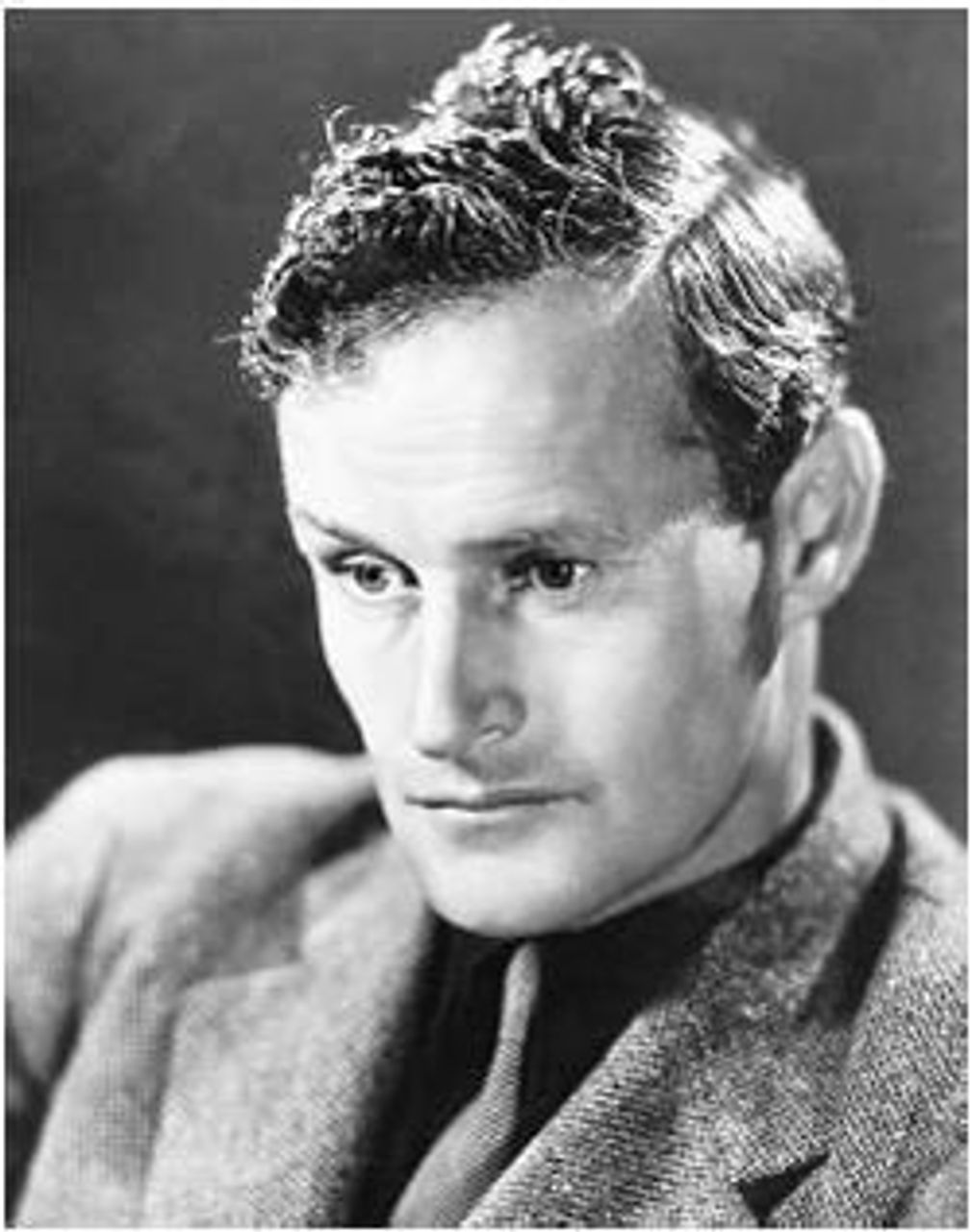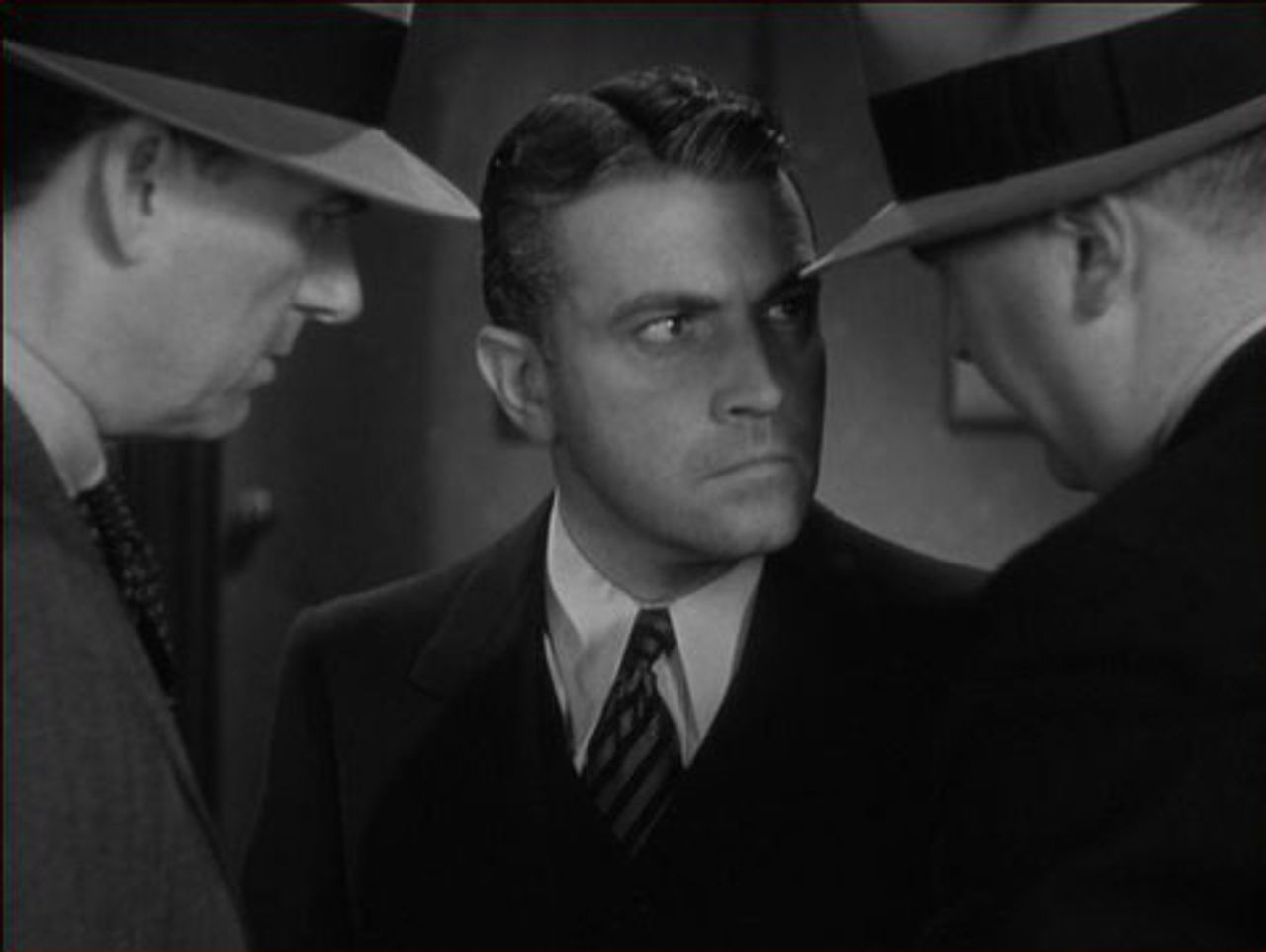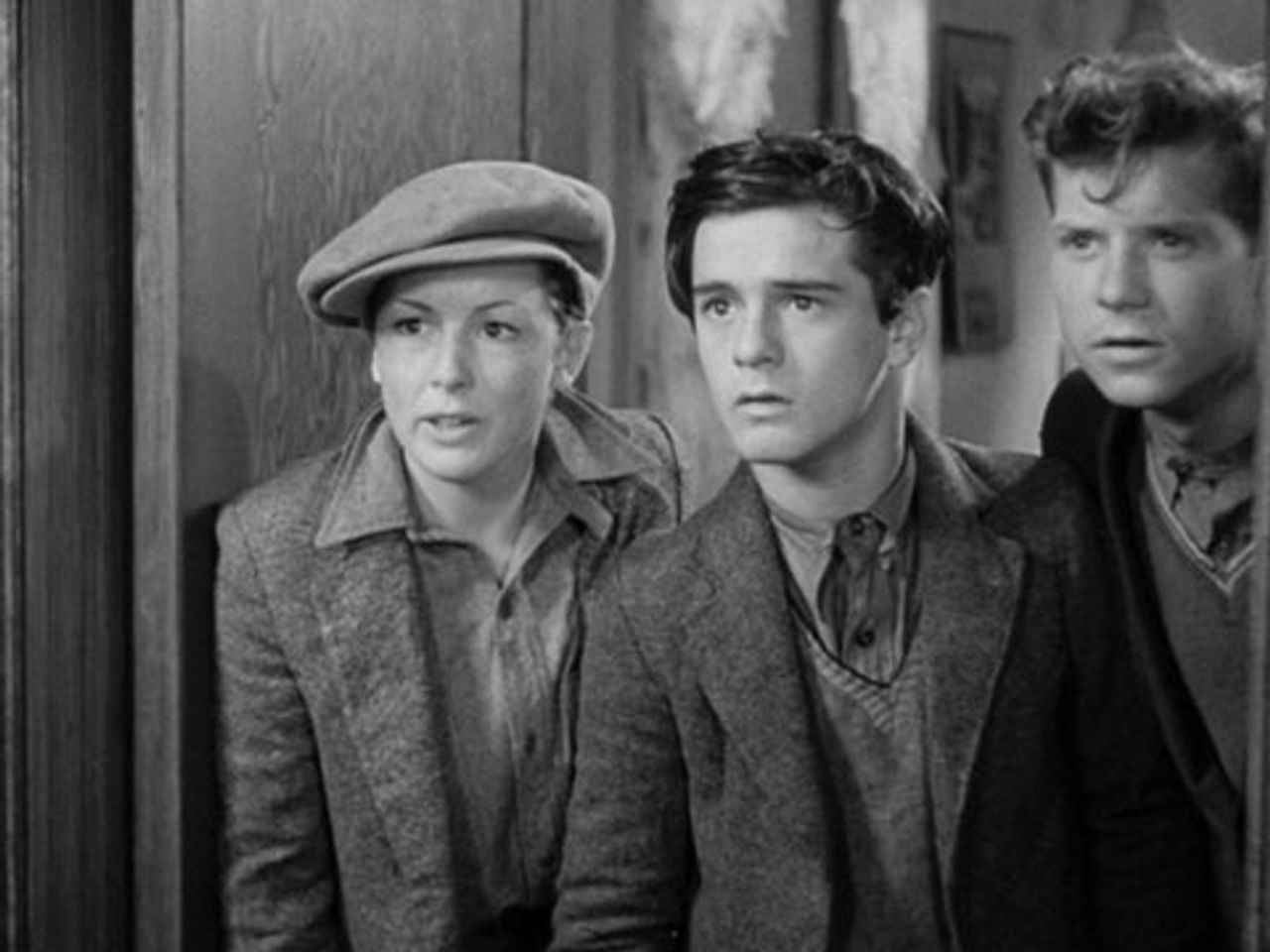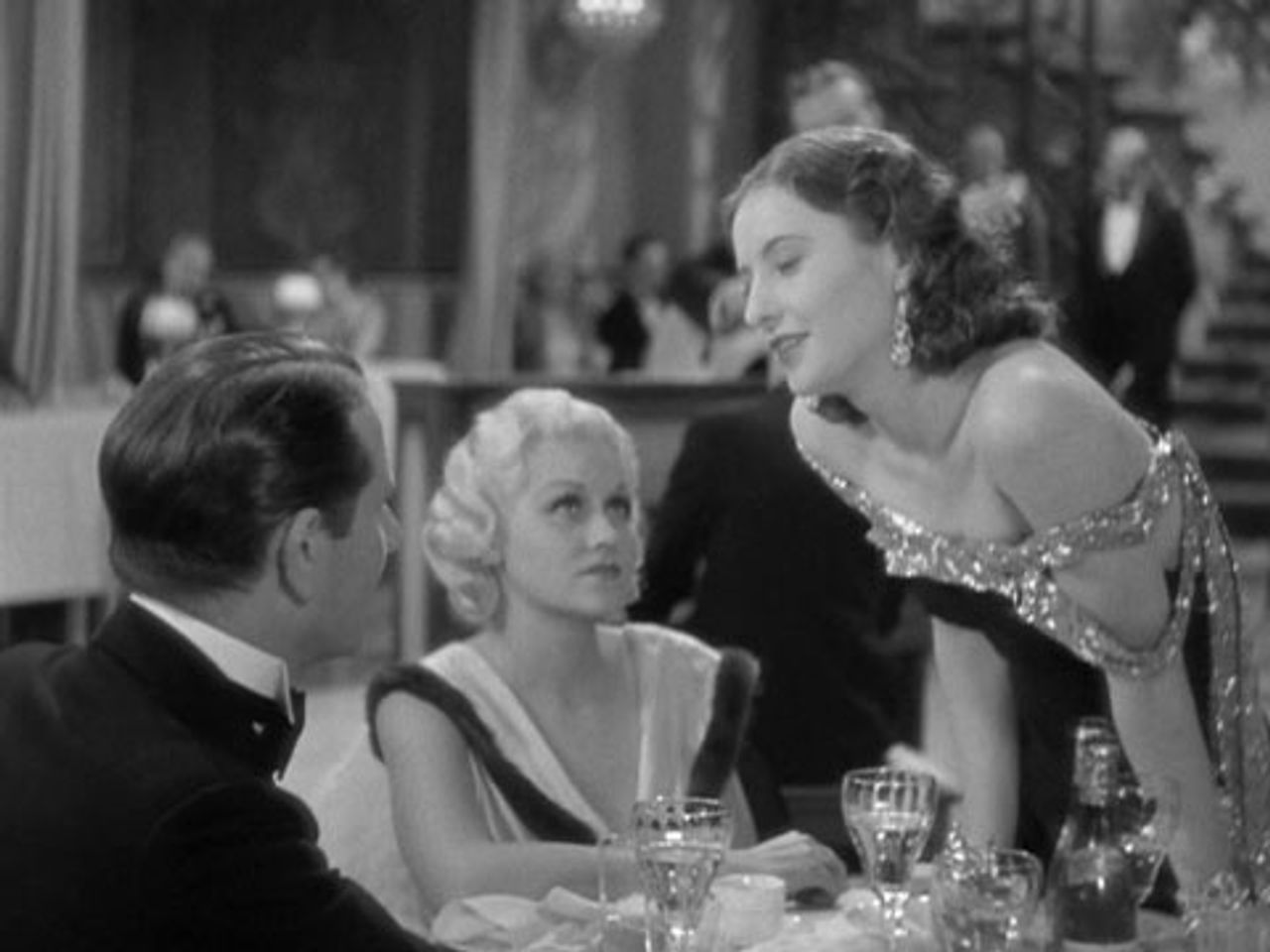Forbidden Hollywood, Vol. 3 (Purchase Price, Other Men’s Women, Midnight Mary, Frisco Jenny, Wild Boys of the Road, Heroes for Sale).
 William Wellman
William WellmanIn one astonishing 12-month period, 1932 to 1933, American filmmaker William Wellman directed 13 movies, 6 of which are included in this, the third volume in Turner Classic Movies’ “Forbidden Hollywood” collection.
Such profligacy undoubtedly has something to do with the uneven quality of these selections, as well as the other 70 movies Wellman (1896-1975) made between 1920 and 1958. The director of such memorable movies as Wings (the first Oscar winner, in 1927), A Star is Born and Nothing Sacred (both released in 1937), and the Ox-Bow Incident (1943), Wellman also, as he readily admitted in a late interview, “made a lot of lousy pictures,” but “never,” added the director, “intentionally.”
 Heroes for Sale
Heroes for Sale
In this four-disc Forbidden Hollywood collection, Wild Boys of the Road and Heroes for Sale stand out for their convincing depiction of aspects of American social life in the 1920s and 1930s: the deteriorating conditions and the resultant upheaval. Unfortunately, Wellman’s perspective is sometimes muddled, diminishing what could have been truly groundbreaking artistic achievements.
However, one must recall that the year in which these films were made witnessed both the depth of the Great Depression and the hopes and illusions embodied in the newly elected Roosevelt administration’s promise of better times. That the artistically intuitive but politically amorphous Wellman shared his fellow Americans’ conflicted feelings is evident in both films.
Wellman was inspired to make Heroes for Sale (1933) by the 1932 Bonus March. In that protest, thousands of World War I veterans demanded bonuses due them for serving in the war. The march was brutally suppressed in Washington, D.C., by military forces commanded by Douglas MacArthur and George Patton.
Heroes for Sale offers a realistic, cynical appraisal of heroism and, more broadly, the miserable social and economic conditions to which many American veterans of the First World War returned.
Following a dangerous mission across German lines, Roger Winston (Gordon Westcott) is mistakenly feted as a hero. Meanwhile his squad member and hometown friend, Tom Holmes (Richard Barthelmess), who achieved the mission’s objective after Roger was paralyzed with fear and the other squad members were killed, is severely wounded and left for dead on the battlefield by Roger.
Back home, Roger’s fame leads to a vice-presidency in his father’s bank. Working class Tom, who was nursed back to health by German field doctors, returns from the conflict addicted to the morphine used to dull the pain of his injuries. Roger assuages his guilt by hiring Tom as a clerk at his father’s bank, but Tom’s addiction quickly results in his firing.
During this latter scene, Tom voices a strong indictment of Roger and his father (and the upper class they represent) for exploiting him during the war and now treating him as a coward and failure. In doing so, Tom speaks for many of his fellow veterans. It’s hard to recall a scene in an American film, including the Oscar-winning The Best Years of our Lives, that so truthfully conveys the real conditions faced by many returning veterans.
After a six-month cure at a “narcotic farm,” Tom begins an odyssey across the country. Wellman’s experience in silent films is evident in his portrayal of Tom’s introduction to Chicago. A mobile camera (which Wellman helped pioneer in sound films) allows the audience to enter homeless shelters and other locales through Tom’s eyes. Here, he meets and eventually marries Ruth Loring (Loretta Young).
Prior to her marriage, Young’s Ruth is an independent, working woman with few delusions about capitalism. For example, she introduces her European immigrant inventor friend, Max Brinker (played by Robert Barrat), to Tom as “a Red,” and not in a disapproving manner (reflecting the large numbers in the US who were either socialist or leftist during the 1920s and 1930s, or sympathetic to the cause). She also gets Tom a job where she works, South Park-Laundries.
However, following their marriage and birth of a son, Ruth becomes the supportive, stay-at-home wife to her successful husband, whose work ethic and “entrepreneurial skills” result in a promotion.
The Max Brinker “Red” character is a type found in a number of pre-Code movies. Educated and skilled enough to invent a new, more efficient washing machine, Brinker is something of a caricature: a dogmatic, but essentially opportunist European “communist” who quickly changes sides and becomes a thorough-going bourgeois once he sells the patent to his invention to South Park-Laundries.
Instead, however, of creating greater leisure time for the workers, the machine is used to increase greater profits while decreasing jobs, consequences portrayed brilliantly by a sequence of shots showing fewer and fewer workers standing in front of the same machines.
Tom (played credibly by former silent film star Richard Barthelmess) is the Everyman of the Great Depression. At first a believer in the American Dream, he becomes radicalized by a series of devastating setbacks, including the death of his wife—she’s killed as she tries to rush to his side during the now jobless workers’ attack on the new machine.
Wrongfully sentenced to five years in prison for fomenting the attack, Tom is subsequently run out of town by the notorious Chicago “Red Squad,” an arm of law enforcement allied with big business against “subversive” elements. Tom’s radicalization is quite understandable.
By the film’s conclusion, however, and without any apparent motivation other than the election of Roosevelt, Tom’s faith in American capitalism is renewed. Left to roaming the countryside, Tom encounters a now jobless and despondent Roger and tries to encourage him by saying, “The country will go on,” and asking him, hopefully, if he has “read President Roosevelt’s address.”
Warner Bros. insisted that Wellman add this “propagandistic ending,” indicating the studios’ pre-Code determination to rein in those artists who went too far during a period of highly combustible social conditions.
Still, how remarkable—today practically unheard of—that such concrete, social events would be portrayed in a Hollywood film!
 Wild Boys of the Road
Wild Boys of the RoadWild Boys of the Road (1933) also takes its main characters on an odyssey across the country at the bottom of the Great Depression, this time two high school boys, Eddie Smith (Frankie Darro) and Tommy Gordon (Edwin Phillips), who decide that they’ve become a burden on their nearly destitute families and so leave to find jobs.
After the boys sell Eddie’s car for junk for $22, they hop a freight and meet another traveler, this time a girl, Sally (Dorothy Coonan, Wellman’s wife). Sally wears boys’ clothing and bonds with the Eddie and Tommy after she proves her toughness in a scuffle with Eddie over a sandwich.
A railroad employee throws the three friends off the train, and a number of similar incidents follow. These scenes are visually powerful and meaningful. At each station one sees people, mostly young but some older, crawling over the boxcars like ants as they try to escape the railroad yard goons. In Chicago, the boys and girls are placed in the stockyards, a further act of dehumanization.
The inhumane treatment of the young travelers reaches an apex when an attractive young girl, Grace, played by Rochelle Hudson, is raped off screen by a railroad goon (Ward Bond) and Tommy’s right leg is run over by a train (and later amputated by a doctor) as he tries to escape railroad “dicks.” This is a particularly effective scene; the camera stays on the approaching train before cutting to Eddie and Sally, whose faces register horror at their friend’s dismemberment.
Wellman consistently depicts adults in certain positions of authority—e.g., doctors and police officers—as sympathetic to the plight of the wandering youths. Inasmuch as these figures embody political or social authority, and the railroad thugs and hired “policing forces” represent the railway companies and therefore capital, Wellman conveys to his audience that the state is the protector of American citizens against the exploitation and oppression visited upon them by the existing economic order.
This conception finds the clearest expression in the movie’s final scenes. Arrested and found guilty for unwittingly taking part in a movie theater heist, the three friends are given a new lease on life by a judge who sits under a National Recovery Administration poster (an agency created as part of the New Deal in 1933) and says he’ll find jobs for Eddie and Sally, and “something for Tommy,” so that the three of them can work their way back home. He also tells them that things will be better now that President Roosevelt is in office.
Unsurprising as it is (and common to many Hollywood films of the time), this vision of a sympathetic, protective state, now in the hands of FDR, undermines Wellman’s portrayal of the conditions that confronted millions of American youths during the Great Depression.
The remaining four movies in the TCM collection exhibit a variety of problems, from stiff, matinee idols for leading men and social stereotypes to an over-reliance on plot contrivances. The movies do contain several strong, credible performances, mostly by women, and all of them feature Wellman’s visual artistry.
 Purchase Price
Purchase PriceBarbara Stanwyck’s performance as Joan Gordon enlivens an otherwise stale and sometimes insulting The Purchase Price (1932). Night club singer Gordon’s only hope of attaining a degree of stability and respect is to sell herself as a mail order bride to North Dakota farmer Jim Gilson (George Brent). Once there, she confronts an isolated, harsh terrain (several shots focus on her, alone against a mountain or the sky).
Stanwyck is highly believable as a woman faced with teaching her mate how to be a husband, while she herself learns how to survive in a very different environment. Brent’s Gilson, however, never gets much beyond the stereotypical “strong male” characters of the period, and he’s surrounded by equally trite, buffoonish fellow North Dakotans.
James Cagney and Joan Blondell (as supporting characters Ed and Marie) provide the most compelling performances in Other Men’s Women (1931). The focus is a love triangle consisting of husband and wife, Jack and Lily Kulper (Regis Toomey and Mary Astor), and Jack’s best friend and co-worker on a train, Bill (Grant Withers), who falls in love with Lily (and she with him) while living with the couple.
A hackneyed plot twist brings Bill and Marie together at the end, but even less believable is Bill’s choice of the mothering, predictable Lily over girlfriend Marie, a vivacious young woman who knows marriage is her only way out of a dead-end job, but who also refuses to be emotionally abused by any man. Blondell’s knowledge of her character’s dilemma is wonderfully brought to the surface in her final scene with Bill. Cagney’s Ed is a young man determined to enjoy life amidst the Depression, while Wellman’s sense of perspective is evident in his railroad yard scenes.
Midnight Mary (1933) is primarily noteworthy for Anita Loos’s script and Loretta Young’s characterization of Mary Martin. In what would later become a film noir staple, the story is told as a flashback, with Mary remembering her life as she awaits the verdict in her trial for murdering her ex-gangster boyfriend Leo Darcy (Ricardo Cortez).
Like many pre-Code female leads, Mary is born into poverty and can only get ahead by illegal means, which lands her in prison twice. In the process, she meets and falls in love with rich socialite Tom Mannering (Franchot Tone), and their relationship results in Mary murdering Darcy to protect Tom.
Twenty-year-old Young draws on Mary’s history and class to deliver a strong, complex character in a seemingly effortless fashion. As her sidekick, Bunny, Una Merkel is uncharacteristically one-dimensional, and Tone’s “white knight” Mannering is just too good to be believed. The happy ending, which Young’s character deserves, comes upon us too fast.
Frisco Jenny (1932) is the weakest movie in the collection. Beginning with the 1906 San Francisco earthquake and ending in 1932, the movie follows a plot line similar to the one in Midnight Mary. Jenny (Ruth Chatterton) starts as a bookkeeper for her father’s brothel and, following the devastating earthquake, is forced into several illegal occupations—prostitution and bootlegging, most prominently—that lead to her arrest for murder.
Too many plot contrivances, many of them visible from a distance, diminish a fine, understated performance by Ruth Chatterton, a performance even more impressive due to the movie’s open invitation to go over the top. Always an actor of intelligence and integrity, Chatterton deserved a better project.
The commentaries included on Disc 4 are a valuable addition to William Wellman scholarship. Actors and directors contemporary with Wellman illuminate the man and his artistry.
